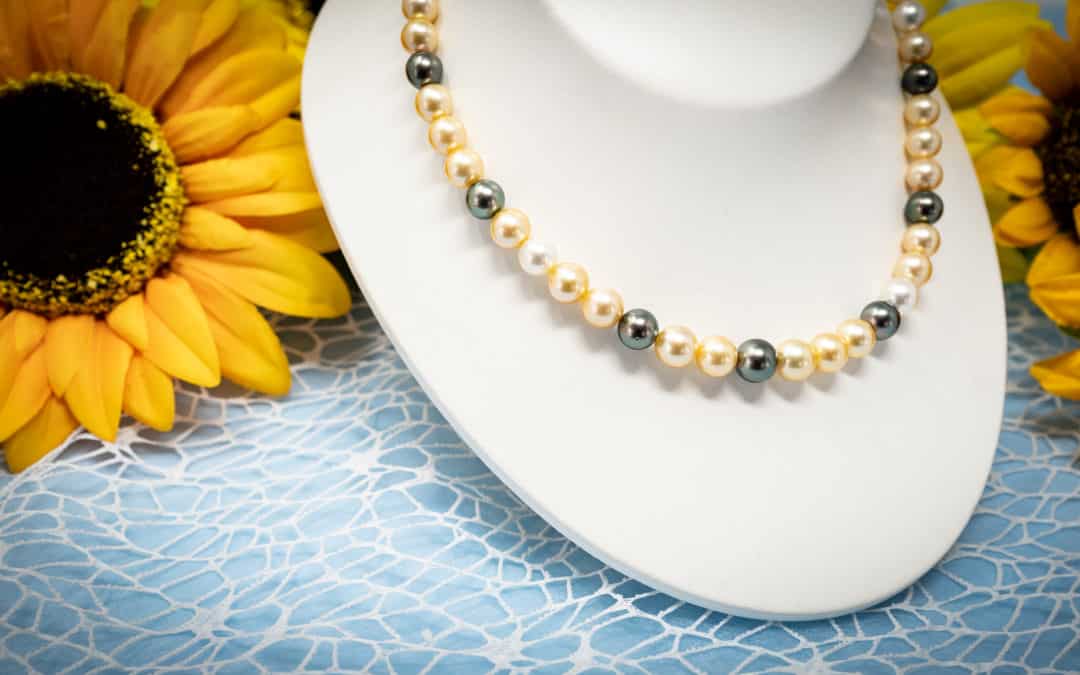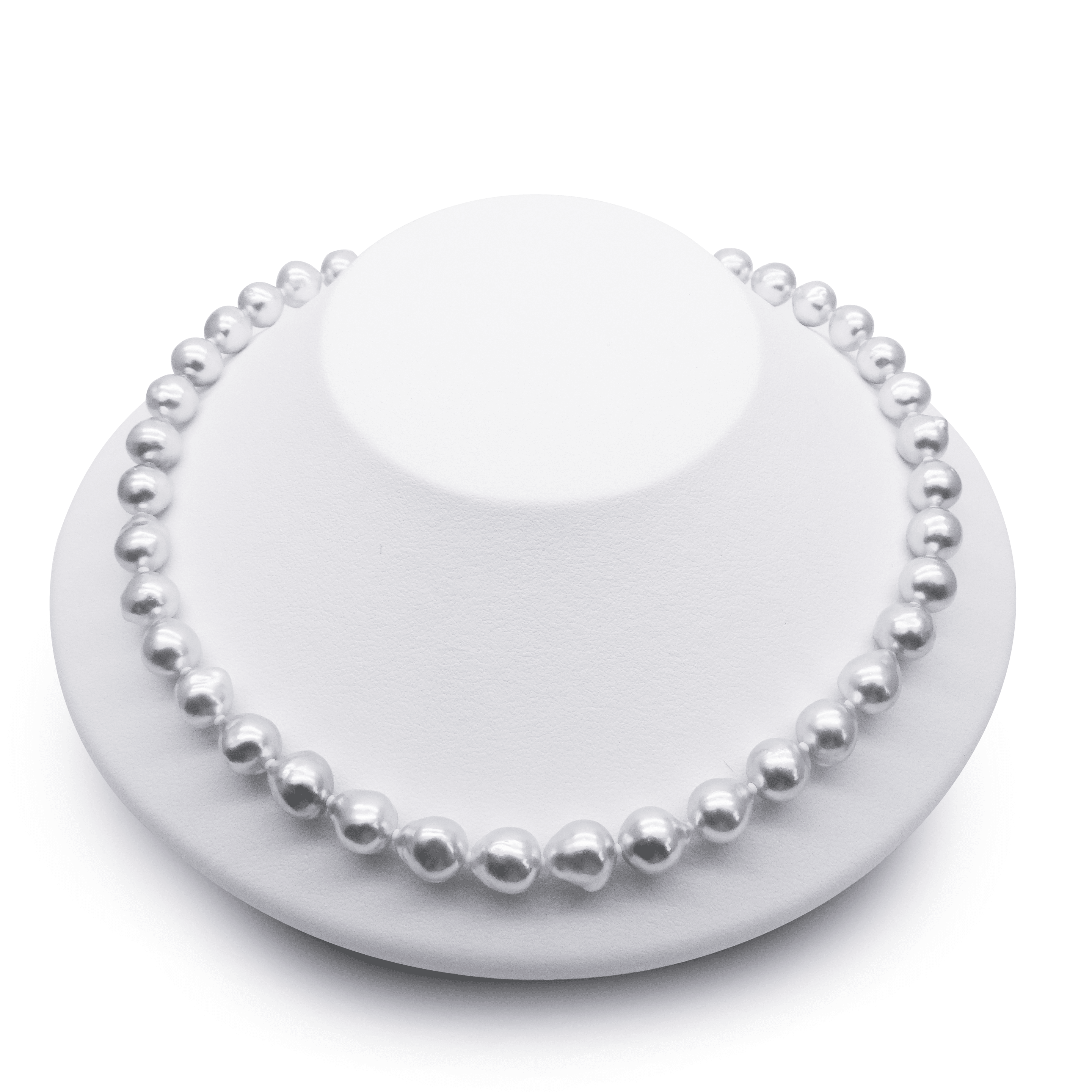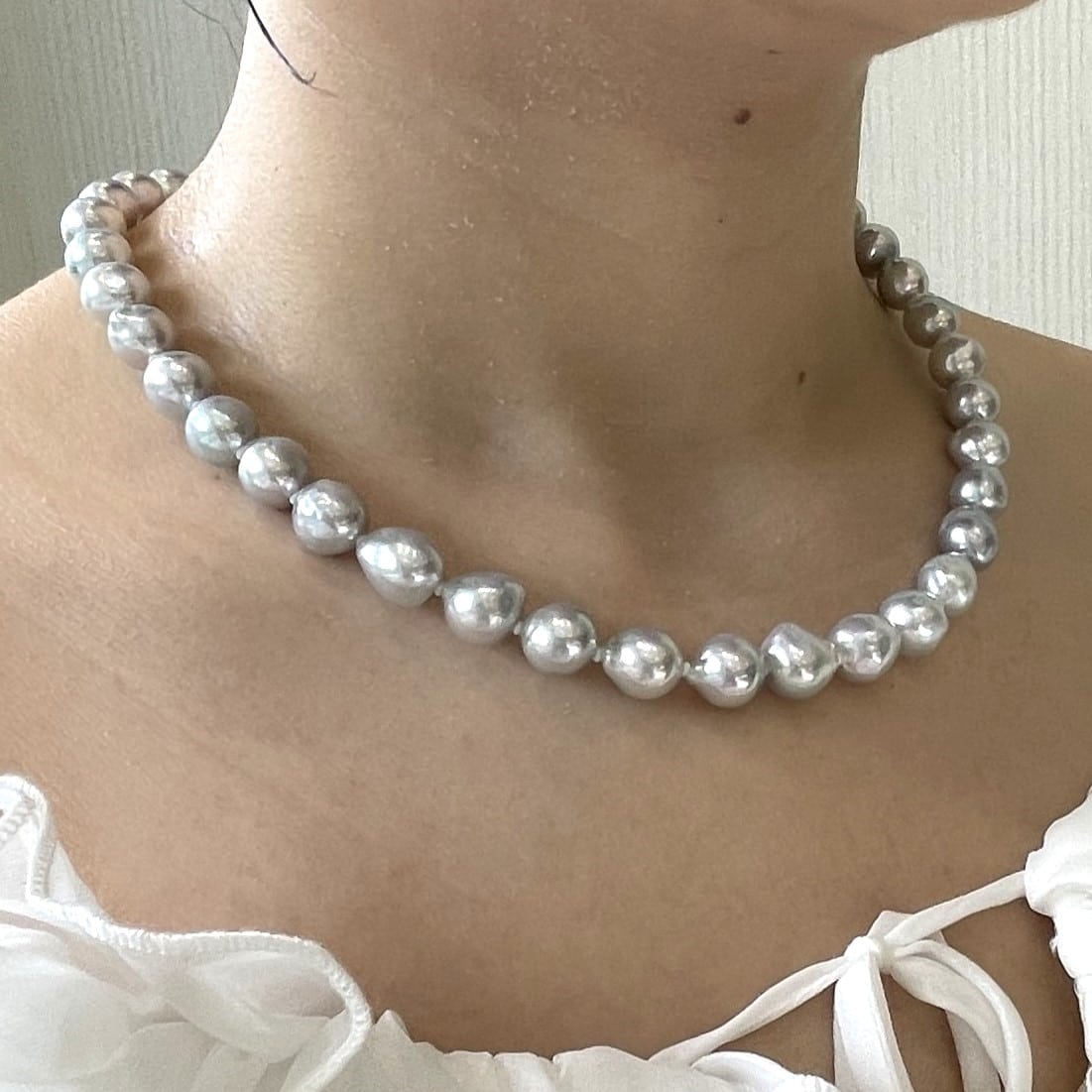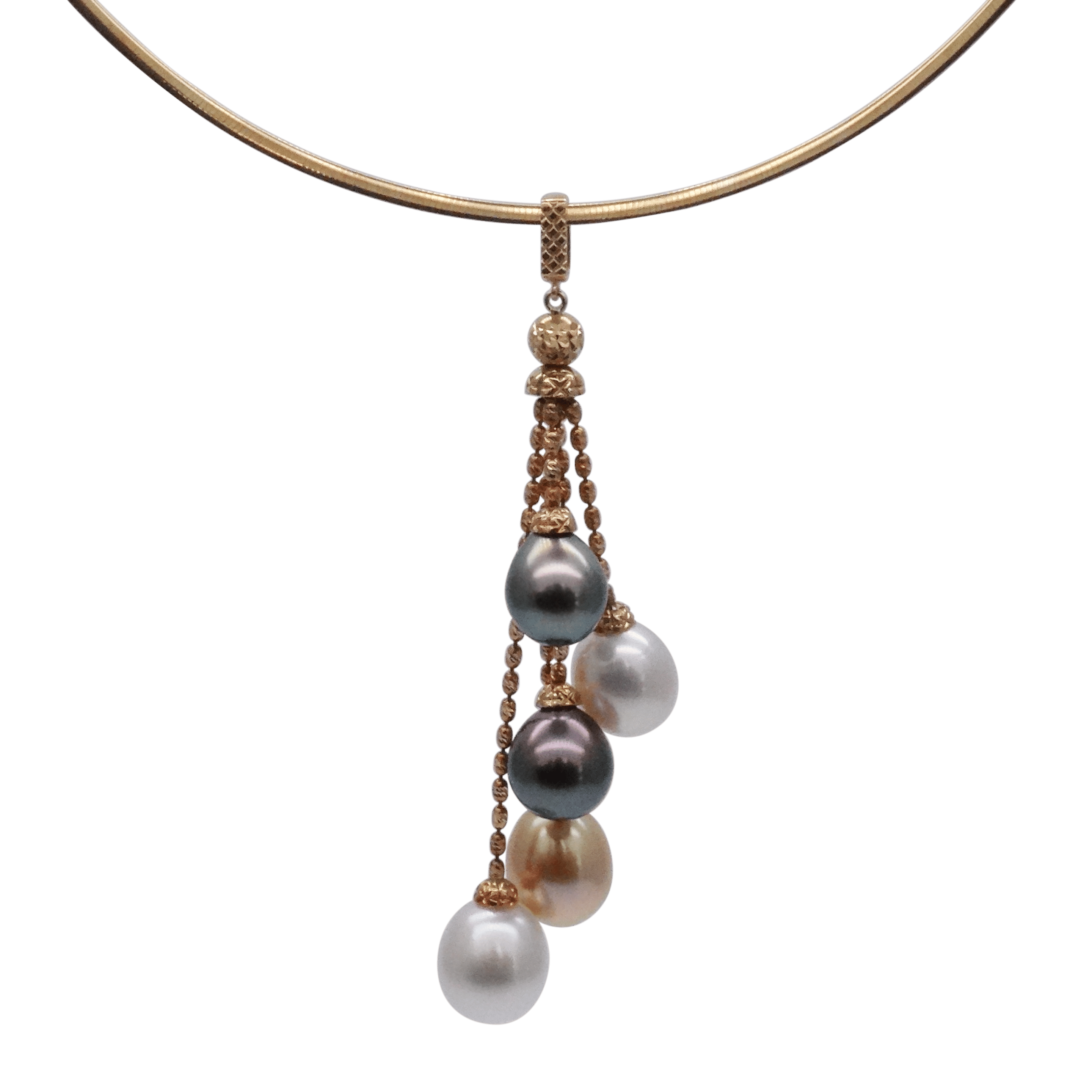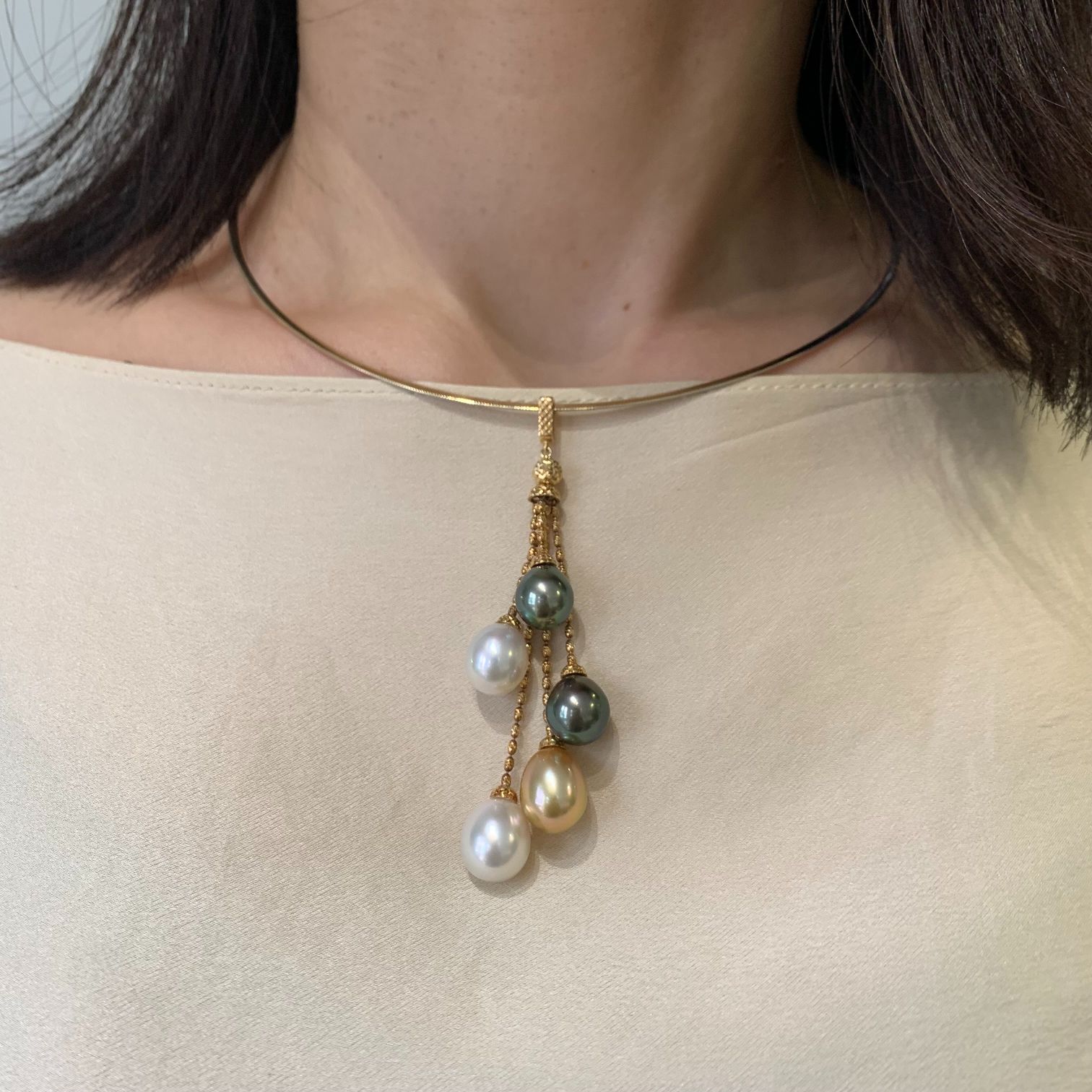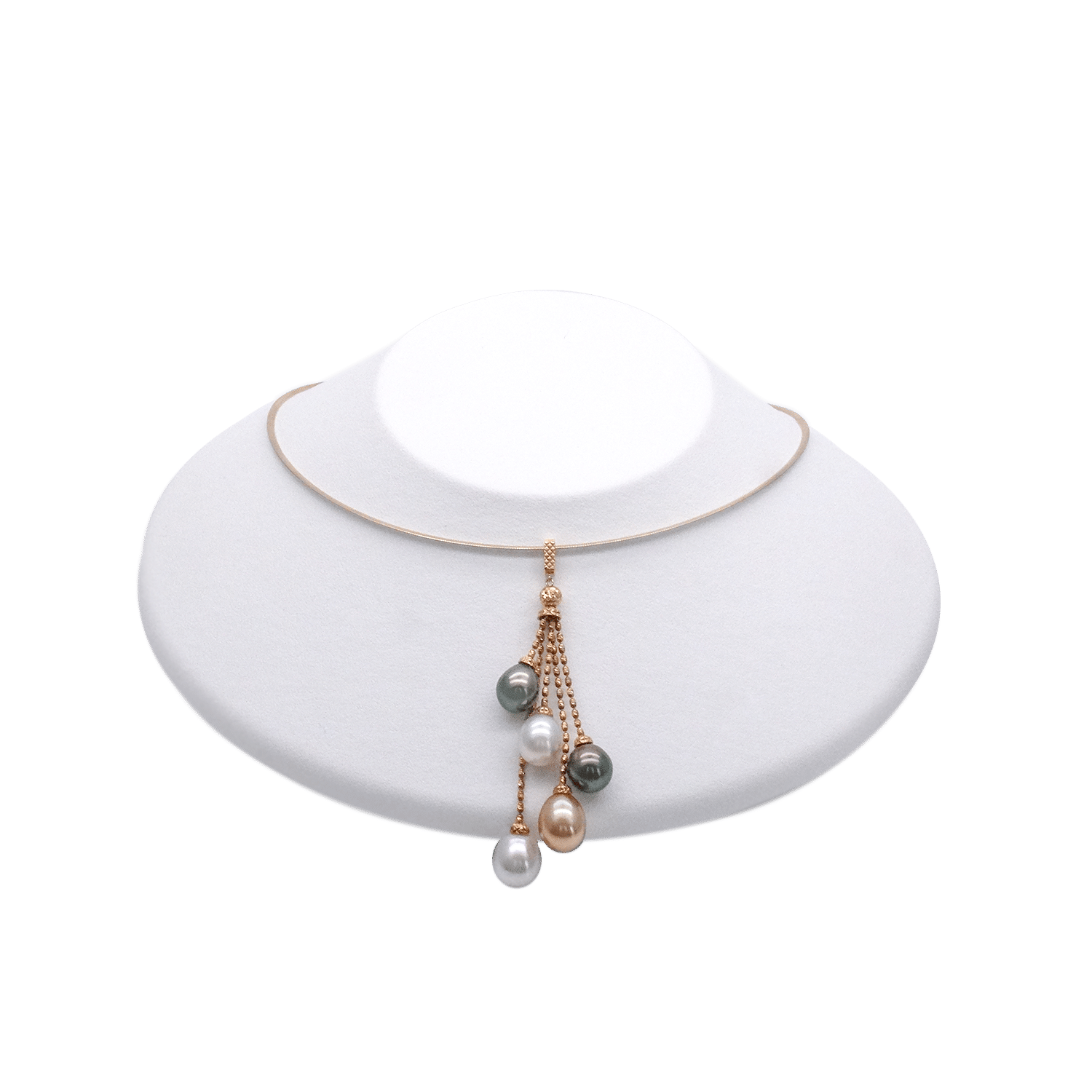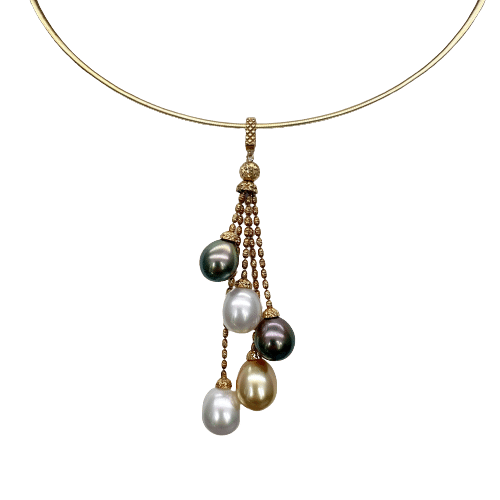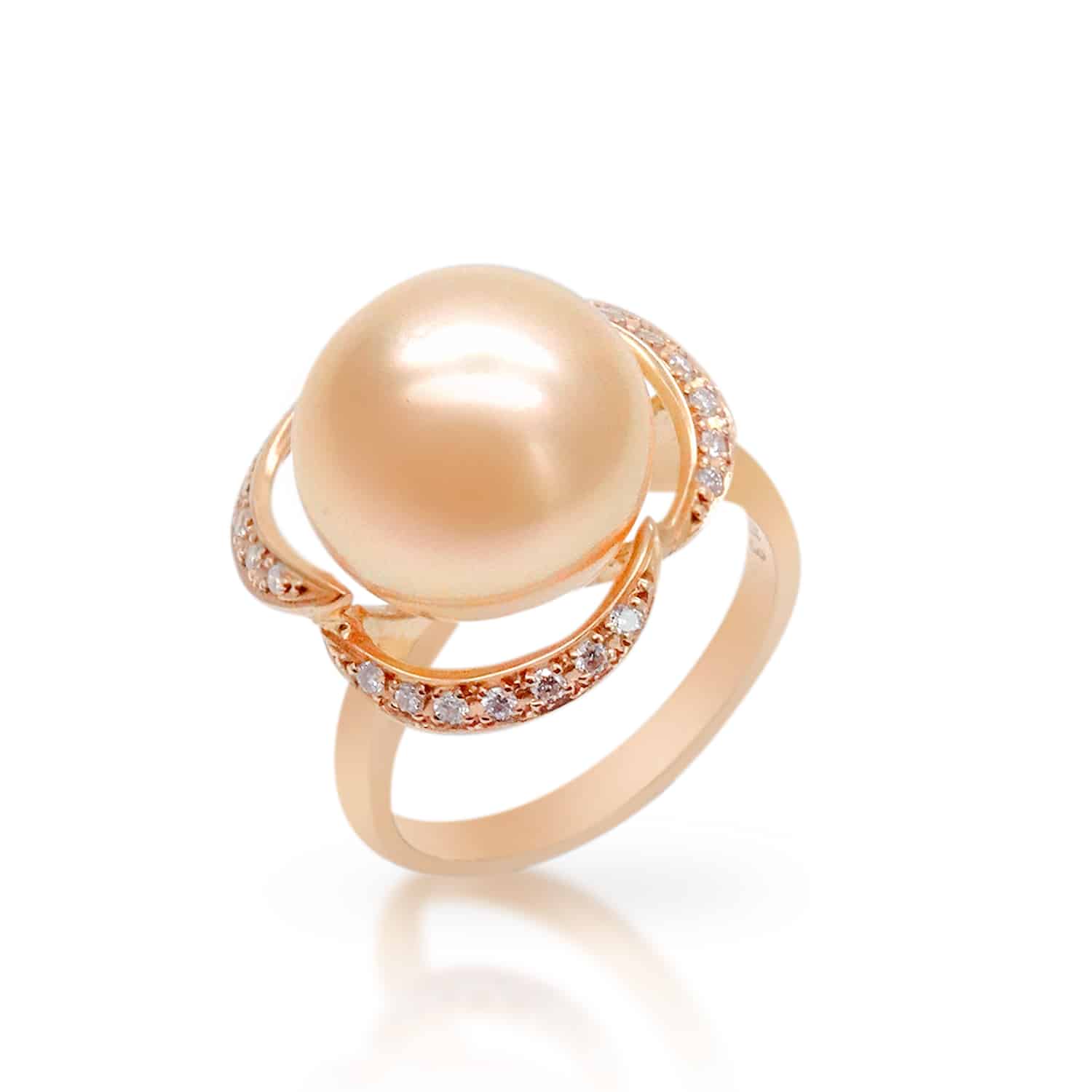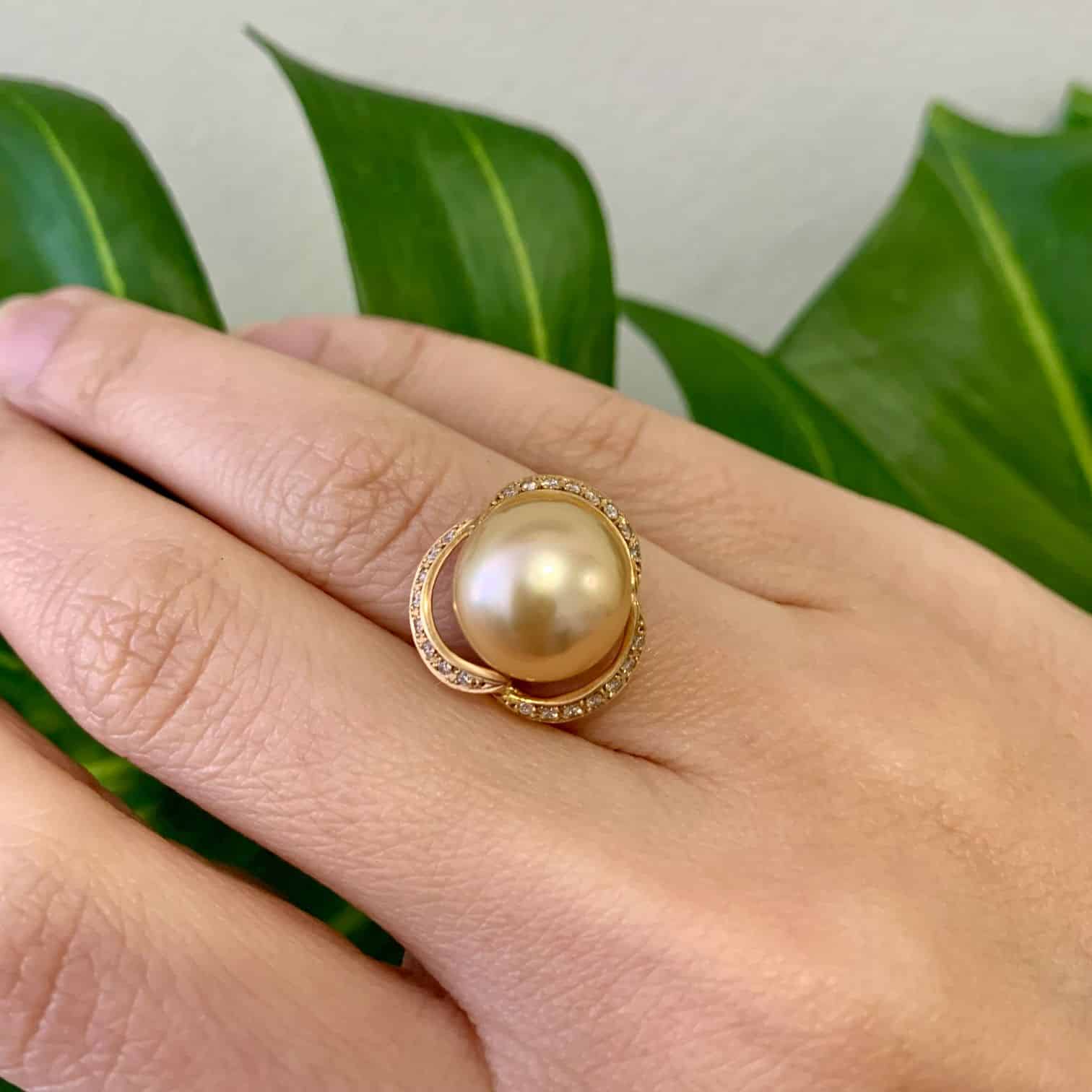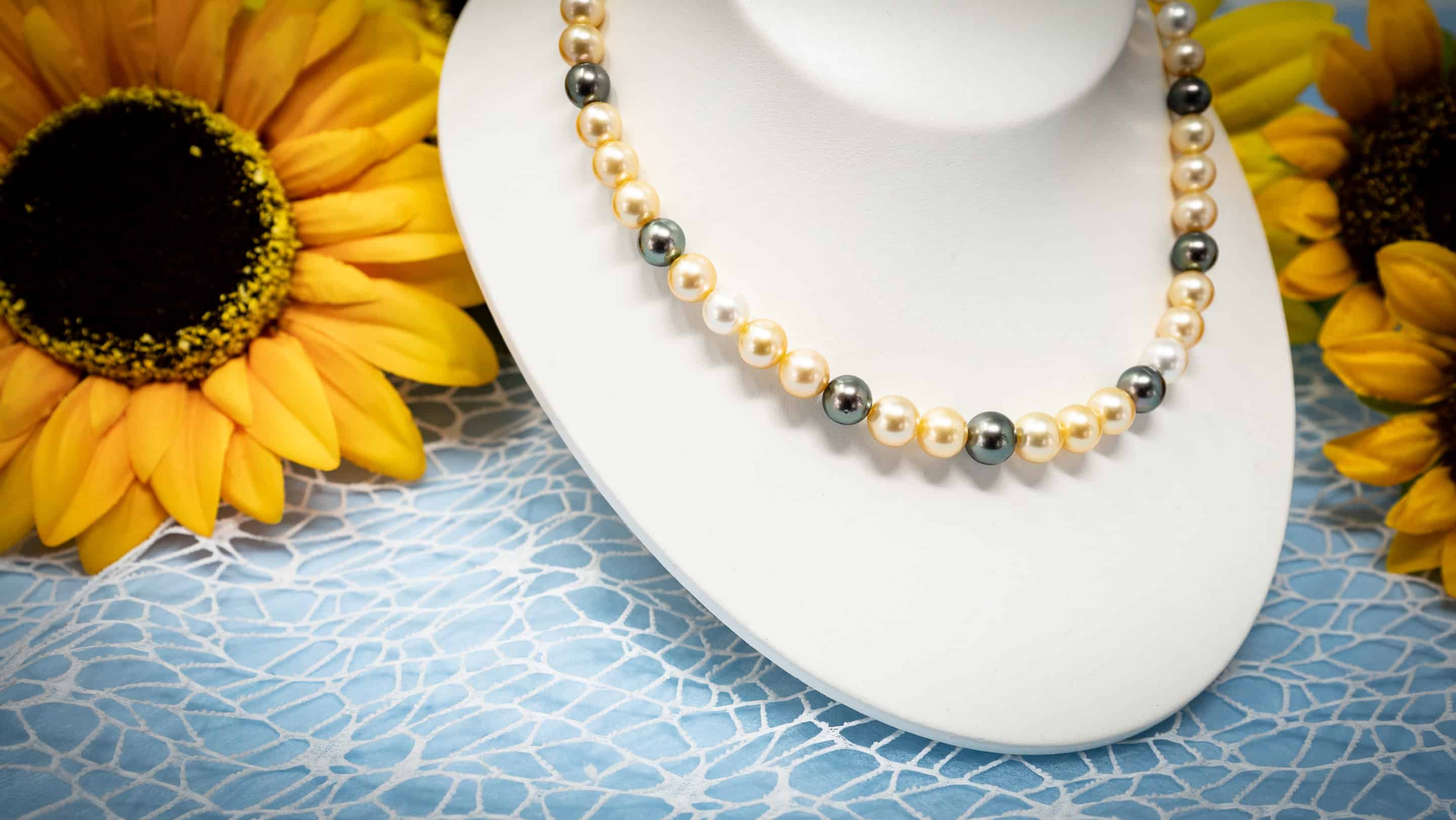
Everything you need to know about South Sea Pearls: A buyer’s comprehensive guide
You’ll most definitely have a small collection of luxury pearl jewelry by the time you read this guide, or maybe own a few pairs of pearl earrings already but chances are, you’d still have some trouble identifying what exact type of pearl are used in your existing collection. But today, we’ll teach you everything you need to know about South Sea Pearls, what makes them special, as well as how to choose the right South Sea Pearl jewelry for you!
What are South Sea Pearls and what makes them special?
South Sea Pearls had always been known to be one of the largest pearl in the world also partly because of the thick layers of their nacre that forms it. Because of this, to achieve their desirable size and unique luster, it takes many years for a single pearl to reach the bare minimum size – Another reason that makes South Sea Pearls more expensive than other types of pearls.
South Sea Pearls are also cultivated under very specific conditions that involves a very tedious process. The bivalves used to cultivate these pearls are regularly checked every month to ensure that they are able to feed properly in their nests, free of parasites such as barnacles and are safe from other predators or detrimental factors to ensure that both the growth and cultivation of the pearl itself are proceeding smoothly, as well as the health of the bivalve itself remains stable for the next 5 years or more before the scheduled harvest.
In terms of the South Sea Pearl’s distinguishing appearance, they possess a more noticeable ‘satin look’ and finish compared to other pearl types, and due to this, their glow seems to ‘radiate’ from within, rather than the mirror-like luster that other pearl types such the Akoya Pearls are known for.
However, this doesn’t mean that South Sea Pearls are dull – In fact, they still shine as brightly, just in a different way. Their luster can be compared to a very smooth, refined and shiny metallic surface compared to a glossy mirror and can come in many varieties of colors and overtones as well.
South Sea Pearl Colors and Grading
Just like other pearl types, South Sea Pearls follow the same grading criteria – They are appraised and graded according to color, size, shape, and luster, which determines their overall quality and value.
Most commercially-available South Sea Pearl should have some blemishes and imperfections and these will usually have fair sizes of around 8-10mm. They will also have a more-noticeable ‘chalky’ appearance and thus, graded low.
Quality South Sea Pearls like the ones that we use in our jewelries and creations are of high quality; meaning that these South Sea Pearls must be less blemish, reflecting light sources with crips, satiny ‘shine’ and sizes range from 10mm and above.
South Sea Pearls of this grade should also be near-perfect spherical or round in shape.
South Sea Pearl Shapes
Just like with other pearl types, South Sea Pearls also feature a wide selection of shapes which is something that you must consider when thinking of your personalized jewelry design or project.
Below are the usual shape classifications encountered in the market:
Round – This is one of the most commonly-used pearl shapes for jewelries, custom or not. Round shapes are more valuable compared to the other pearl shapes.
Semi-round – This shape can still pass as ‘round’ on some occasions, especially for people on a tighter budget but still wants the round variant. A Semi-round pearl shape will only typically have very small marginal error of 2-3% and is barely noticeable unless otherwise, carefully examined under a loupe.
Button – This shape type is still spherical in most parts but the circumferential differences and variation are more noticeable, resembling ‘Tall Buttons’ and are mostly used in earrings.
Teardrop – As the name implies, this shape resembles drops of waters or tears, giving it a peculiar feel and look, and is usually used in pendants or earrings as well. They also go perfectly well with other pearl shapes!
Baroque – This shape type is perhaps the most unique of these types. Their irregular patterns are ALWAYS one-of-a-kind as we have previously stated, but because of these, their luster and glow are sometimes even better compared to round pearl types!
South Sea Pearl Colors
As previously mentioned, South Sea Pearls also come in an extensive variety of colors, overtones and combination of both. Below are the usual colors of South Sea Pearls that you can encounter in the market, as well as what we use to make your jewelry:
White – The most commonly-encountered color. Silky White. These color can also have overtones of green, blue or gold, and are usually sourced from Australia.
Gold – Gold South Sea Pearls are able to achieve their naturally-stunning gold color due to a special species of oyster called the Gold-lipped oyster and are usually cultivated in the warm waters of The Philippines, Indonesia and Myanmar. They can also have overtones of bronze, champagne and rose – with the latter being the rarest.
Black – Black South Sea Pearls are usually cultivated in Okinawa, Japan and French Polynesia. Their singularly dark colour is highly prized, with an exceptional array of iridescent colours – among them, soft gray, brown, green and peacock.
Things to consider when buying South Sea Pearl Jewelry
South Sea Pearls command one of the highest prices due to the qualities and factors cultivation that we have previously explained and so, one should carefully give it enough thought when buying jewelries made of this marvelous type of pearl.
To make the most out of your budget, we recommend opting for a custom-made jewelry instead, rather than looking for mass-produced or much more common designs and because of their impressive sizes and mesmerizing colors, you can’t go wrong with Sea Pearls as your first choice of material or gemstone for your personalized jewelry as well!
They’re simply unique in every way and brings a rich addition of finesse to any design you can think of.
Finally, the purpose of the jewelry – Are you buying them for a specific event or as a gift? For what occasion and purpose? These are the few things to think of when getting your South Sea Pearl Jewelry. Here are more pointers to consider to find the right one for you:
- Luster and shine: The coalescence of a pearl’s surface brilliance, deep radiance and shine is one of the first determinants of a pearl’s quality. A good, quality pearl should not have a ‘weak’ shine or dull luster and surface reflection should be clear. In contrast, a ‘chalky’ luster consistency is indicative of a lower-quality pearl.
- Surface quality: Quality pearls will have as little blemishes as possible even when observed under a loupe. There should also be less visible ‘mottling’ or patterning on the surface due to the result of thick or bad nacre accumulation caused mainly by disturbances during the layering process. While this kind of blemish does not affect the durability of the pearl, its overall beauty, or considered to be ‘inclusive’.
- Shape: While genuine pearls are created through natural and biological processes, there can be no ‘perfectly round’ pearl. However, the best-quality South Sea Pearls should still have near-perfect spherical shapes. You can also consider getting Baroque South Sea Pearls if you enjoy unique shapes are truly looking for something one-of-a-kind.
- Size: Pearls of larger sizes are no doubt, highly regarded and South Sea Pearls that exceed sizes of 14mm are exceptional. In general, the larger the pearl, more valuable it is going to be. Sizes are also important to consider depending on the type of jewelry it will be used at – For example, earrings and rings usually use South Sea Pearls that are at least 8-10mm in size.
- Color and overtones: Color is another defining trait that gives pearls their unique identities. Make sure that the color of South Sea Pearls in your jewelry perfectly matches or compliments the design of jewelry itself, as well as your other accessories or clothing.
How to Identify Authentic South Sea Pearls
South Sea pearls are most easily identified by their size. Born from the Pinctada Maxima Mother Oyster, one of the largest oysters in the world, South Sea Pearls are among the largest in the world. While most South Sea Pearls range in size from 8-20mm, however, if the pearl is allowed to mature longer, it can grow to even larger sizes.
Best known for their softer glowing, ‘silk-like’ luster.’ compared to other cultured pearls, South Sea pearls can still attain a greater ‘mirror-like luster.’ The qualities of a pearl’s luster are contingent upon the health of the ocean water and plankton from which the nacre forms consistently thick layers.
Pearls from the South Seas typically have a thicker layer of nacre relative to other pearls. White South Sea pearls are cultivated mainly in waters north of Australia, while gold and colored South Sea pearls are most commonly from the Philippines and Indonesia.

Color and Surface Texture of South Sea Pearls
South Sea pearls come in a wide variety of colors and hues, including white, blue-white, pink, cream, light yellow, and gold. Silver or Golden-lipped Oysters produce pearls with silver, white, aqua, or blue overtones, while those produced by Golden Oysters produce pearls with gold, champagne, and cream overtones.
The warm waters where South Sea pearls grow, however, may not give them quite the same sheen as Akoya cultured pearls from the milder ocean temperatures surrounding Ise Shima Japan. An unblemished South Sea pearl’s value will depend on how close it is to being distinguishable from others. Pearl blemishes are sometimes natural and even desirable because the blemishes may help to confirm the pearl’s authenticity. A pearl’s overall surface smoothness and cleanliness are also important factors to help determine a pearl’s value.
Round and Baroque South Sea Pearls
In spite of South Sea pearls being valued for their round shape, some ‘baroque’ shapes – irregular or oblong shaped pearls can also be breathtaking. South Sea pearls are available in a wide ran’ge of shapes and sizes. The chances of finding perfectly round South Sea pearls are extremely low since only 10-30% of each harvest is considered spherical or nearly spherical. From that same harvest, a good portion of the pearls will be defined as ‘baroque,’ or ‘non-round.’
South Sea Pearl vs Akoya Pearl Sizes
After about 3 years of diligent cultivation practices, a South Sea pearl will range in size between 9mm and 20mm, with 12mm being the average. In contrast to Akoya pearls which typically range in size from 3mm to 10mm with 8mm being the average.
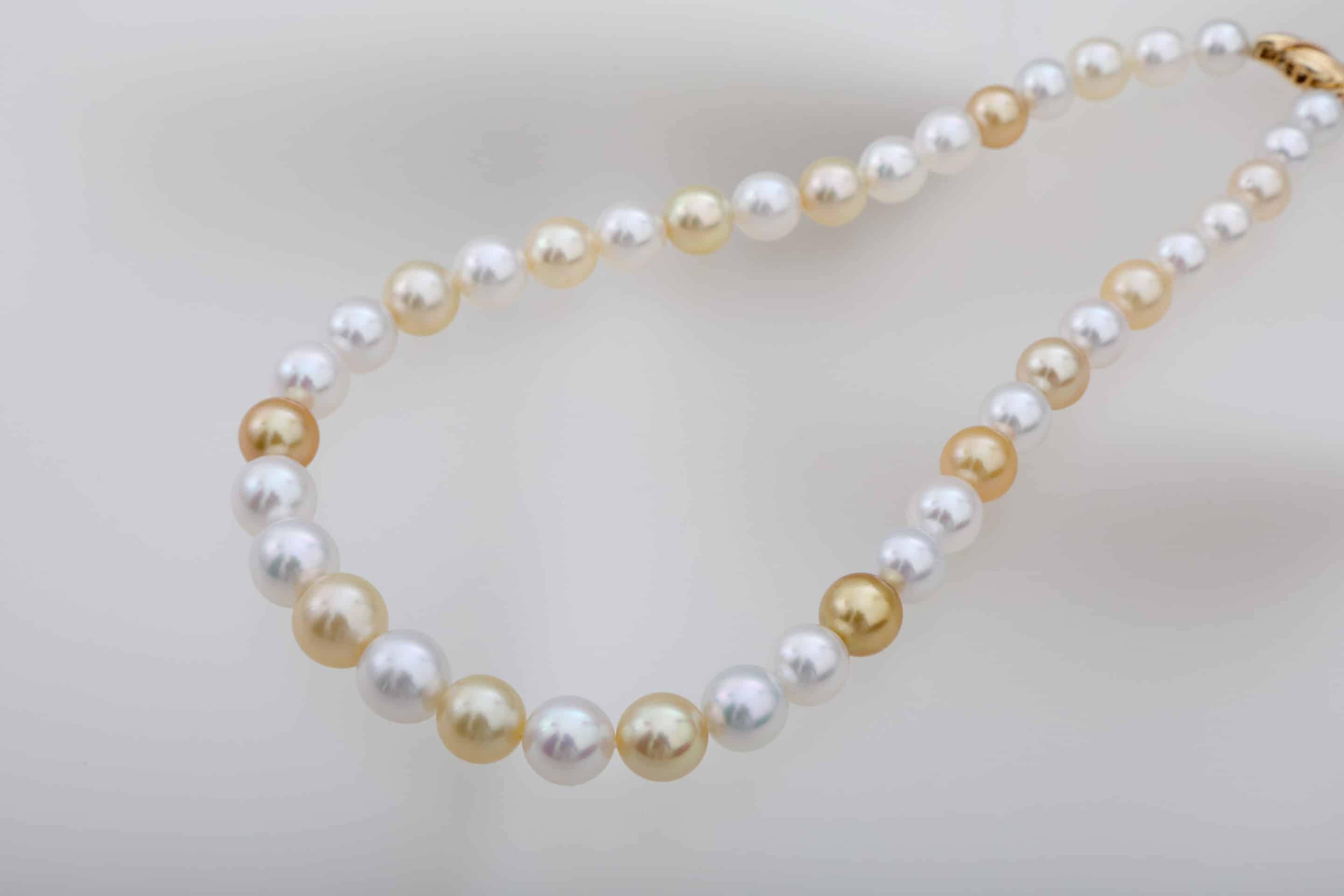
How to Care for Your South Sea Pearl Jewellery
Pearls are one of Mother Nature’s great treasures. A pearl’s nacre layers are in fact relatively soft, and without proper care, the layers of nacre can chip away over time.
We recommend keeping your pearls in a ‘soft-lined breathable’ box to prevent rubbing against other jewellery and to allow your pearls to breathe. Be sure to keep your pearl jewellery free of makeup, hairspray, harsh soaps and chemicals. One should always perform one’s beauty routine first, then put on pearl jewellery. After wearing your pearls, gently wipe them with a soft, dry cloth. Rest assured, your pearl jewellery will remain fabulous for years to come if you keep the above guidelines in mind.
Pearl FALCO has the Largest Selection of South Sea Pearl Jewellery in Singapore – Best places to buy South Sea Pearls
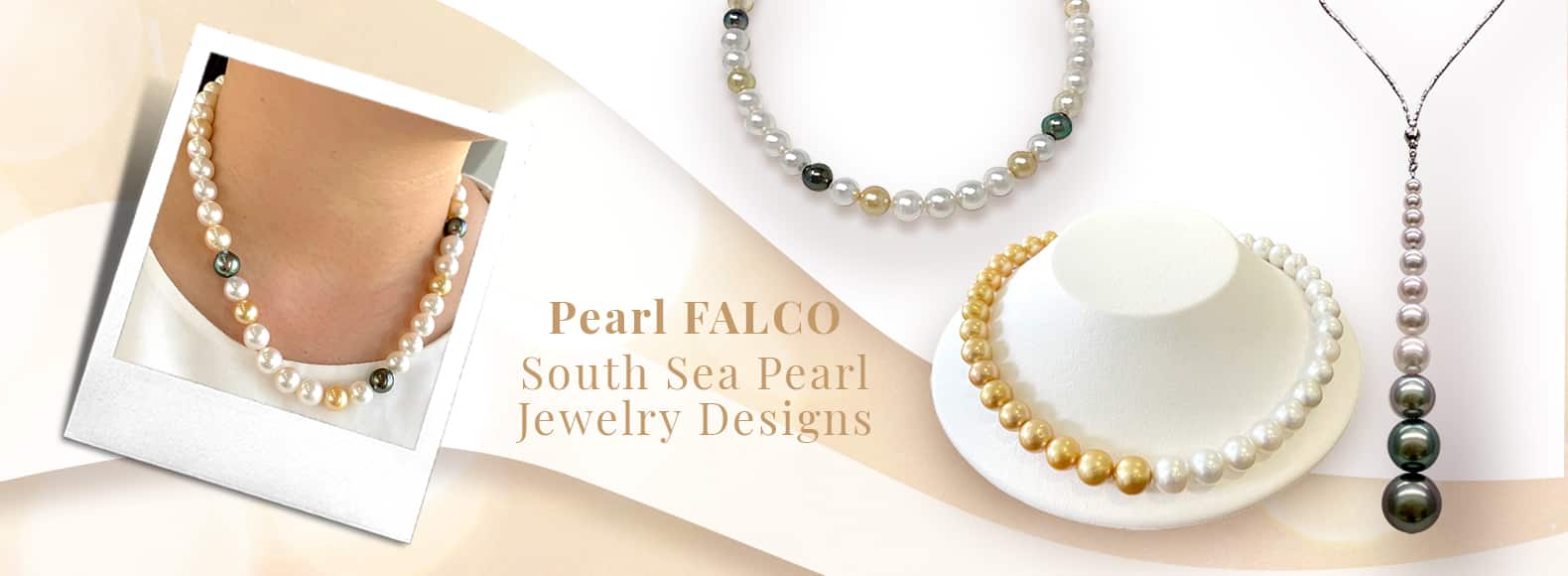
A Few of Pearl FALCO’s Most Popular South Sea Pearl Jewellery Designs
Pearl FALCO Is Here to Serve You
If you would like to learn more about these or other designs, other designs or something else entirely, please feel free to reach out to us on WhatsApp at +65 6610 2967 or via our Contact Pearl FALCO Page. We would love to hear from you!
Please be sure to check our Pearl FALCO Blogs as well for more interesting and useful information about pearls and pearl jewellery!

